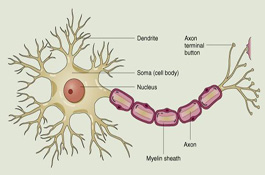Regeneration in humans can take place at 3 levels
1) Molecular Level (Molecular Biology & Genetics)
Cell turnover and division is regulated on a molecular level. Inside all of your cells (the most basic functional unit in any system) there are hundreds if not thousands of small molecules (proteins, RNA, DNA, carbohydrates, lipids, etc) interacting to drive the everyday processes that your cells must undergo to survive and function. In the context of regeneration, each cell’s fate is dependent on these molecules and their interactions to drive them to divide, to remain the same, or to die. Cells adjust the rate at which these mechanisms are activated to control growth, replication, and death in response to their environment.
 2) Cellular Level (Cell Biology)
2) Cellular Level (Cell Biology)
The cell is the body’s most basic functional entity. Cells can be either homogeneous or heterogeneous and almost always bundle together to create a tissue that has a specific structure and function. There are cells, for example, single nerve cells or neurons, are capable of regeneration. Neurons consist of a cell body (the head), an axon (the arm), and dendrites (the hands) that work together to receive (dendrites), process (cell body), and deliver (axon) messages all over our body (see image below). If a neuron is separated at the axon but the cell body remains intact, the axon has the ability to close the wound, generate a new growth place, and begin to regrow another extension to replace the damaged portion which is degraded.
3) Tissue Levels (Anatomy and Physiology, Clinical Medicine, Bioengineering, Physics, Computer Science)
Many tissues in the human body are capable of exhibiting regeneration in response to injury as well as general upkeep of normal tissue, to name a few: blood, skin, bone, skeletal muscle, liver, pancreas, small blood vessels, and kidney epithelium. In a perfect world these tissues would be able to regenerate under any circumstance, however, the environment within the tissue must be just right. Cells that are able to generate energy, engage in cross talk, and respond to the ‘regeneration signals’ produced must be present. Additionally, the cells must be able to communicate in a stable and organized fashion so they can be directed to proliferate and differentiate into the appropriate tissue. Finally, those signals that may inhibit regeneration must be modulated to enable an environment for growth and expansion of functional, healthy tissue.
Reference: Regenerative Biology and Medicine, David L Stocum ©2006, Elsevier Inc.

